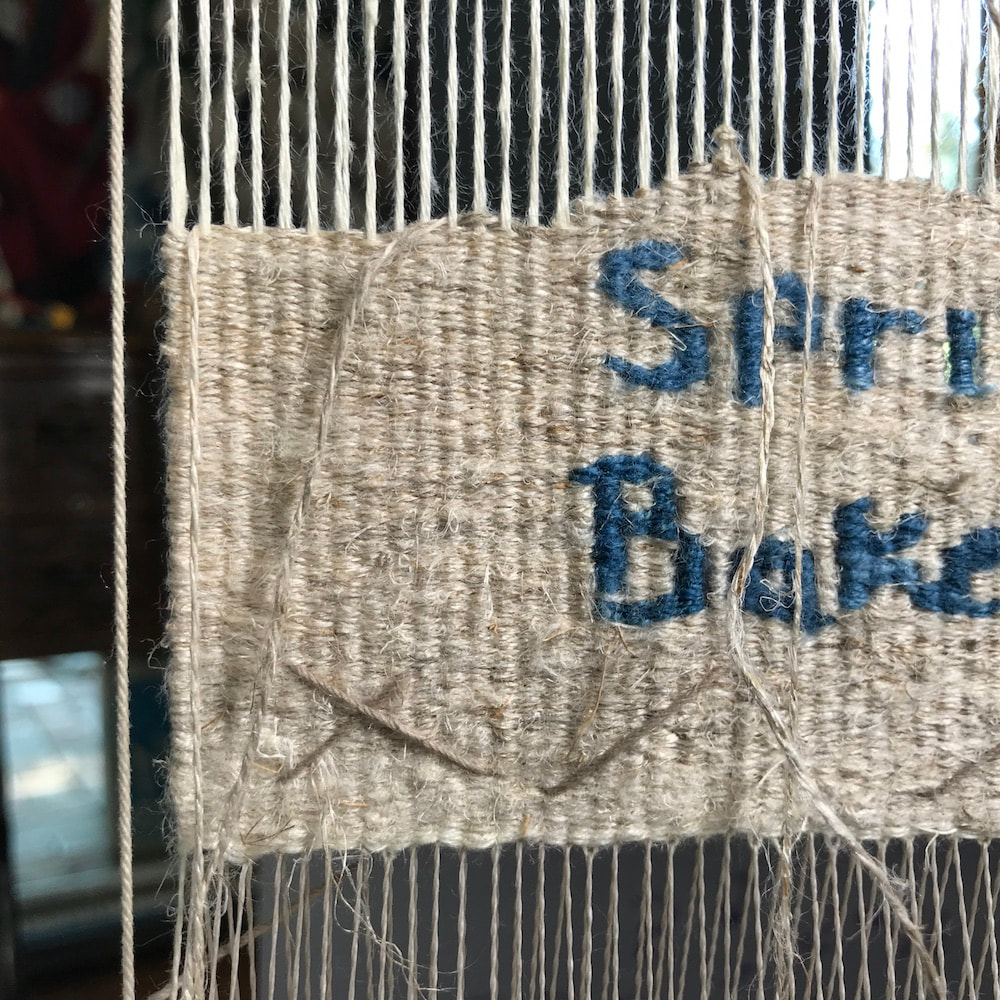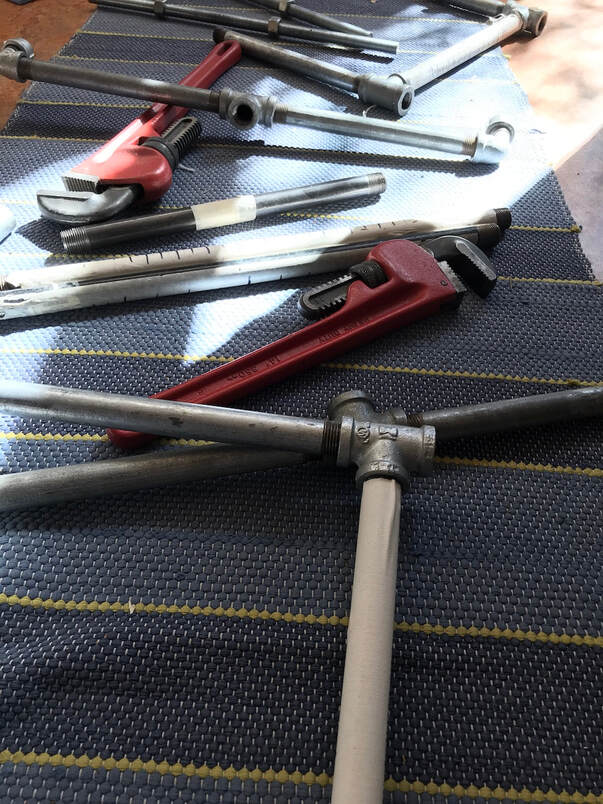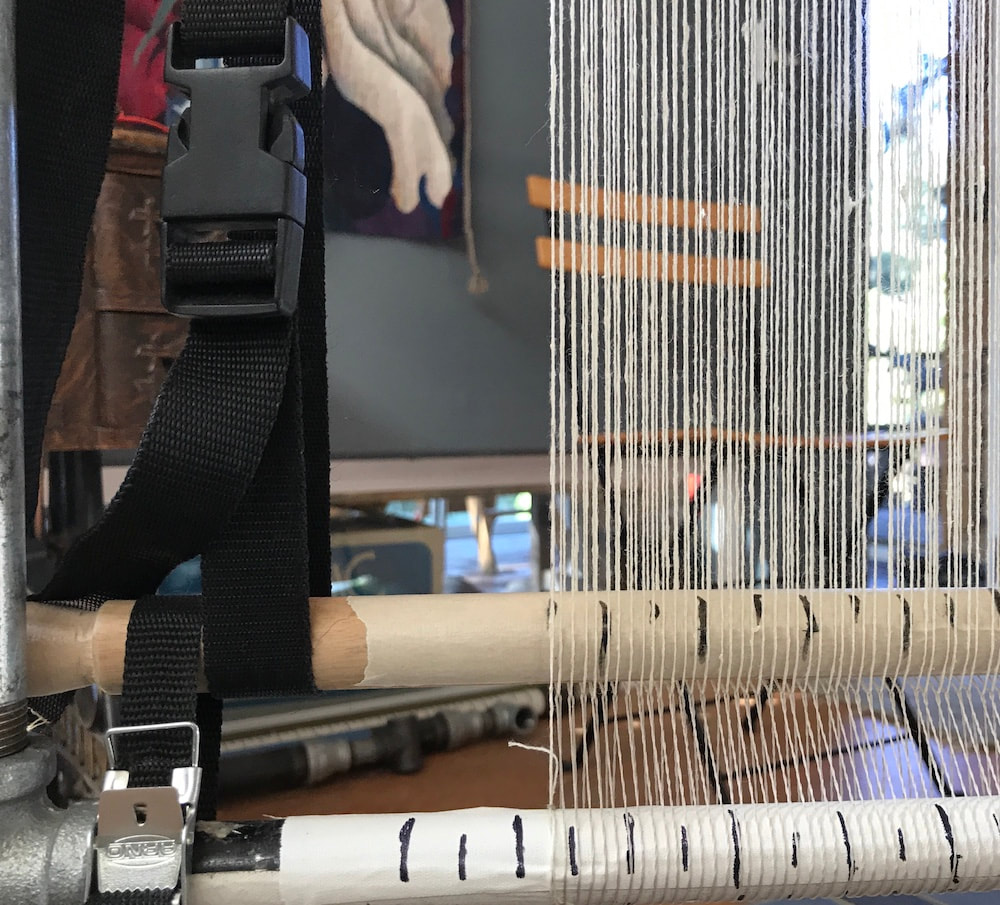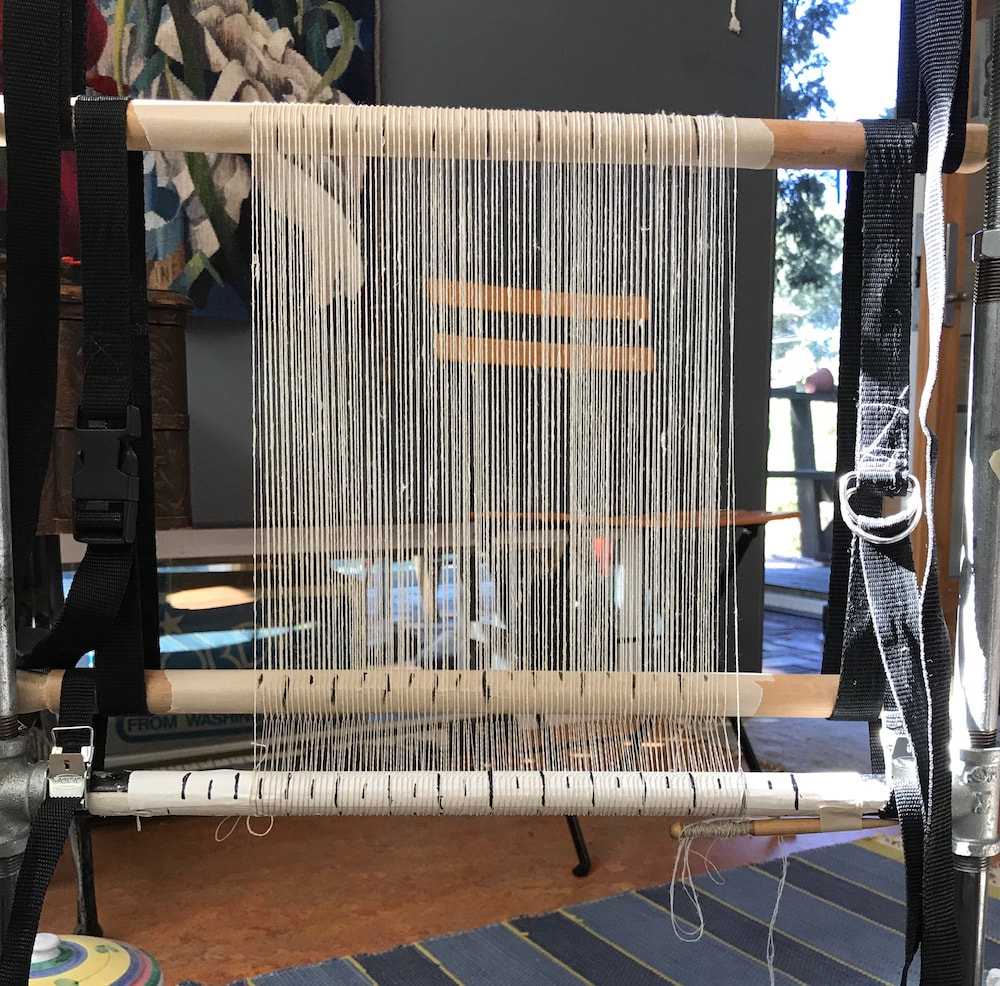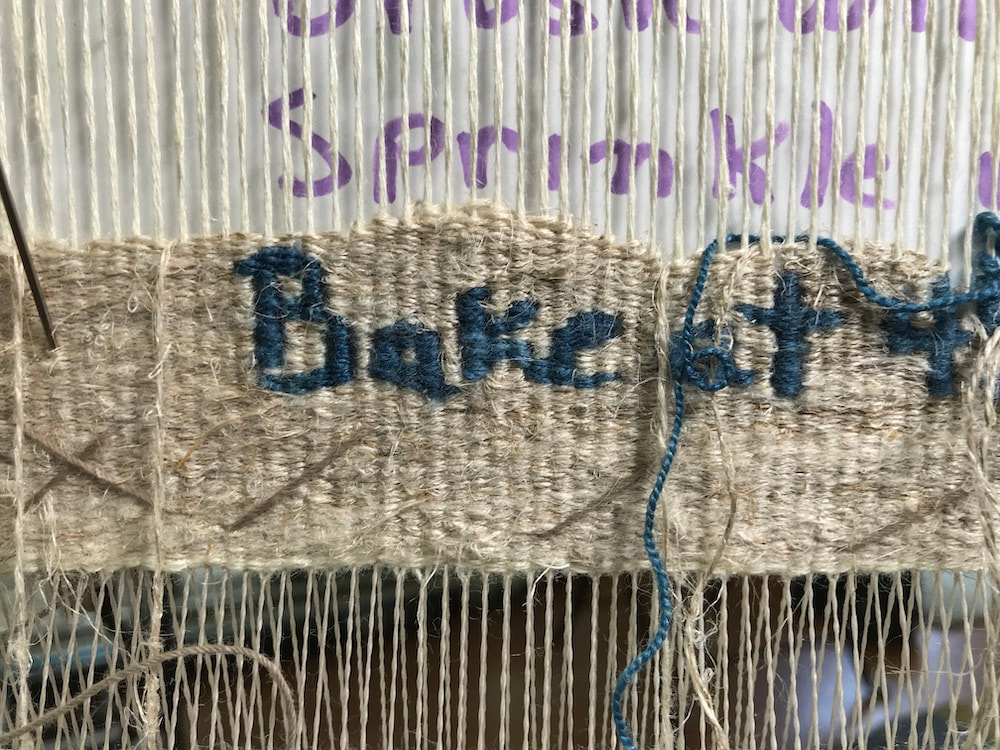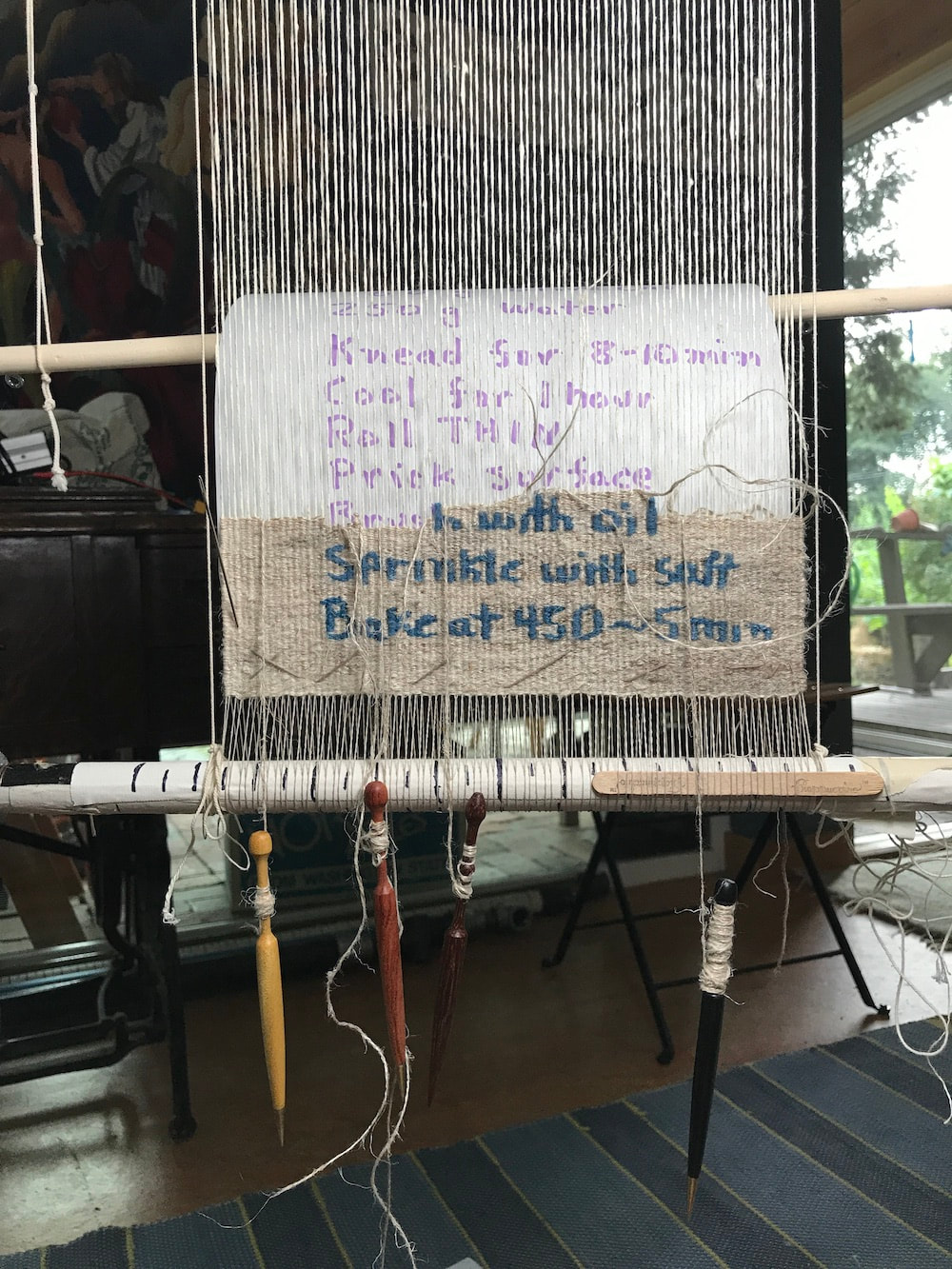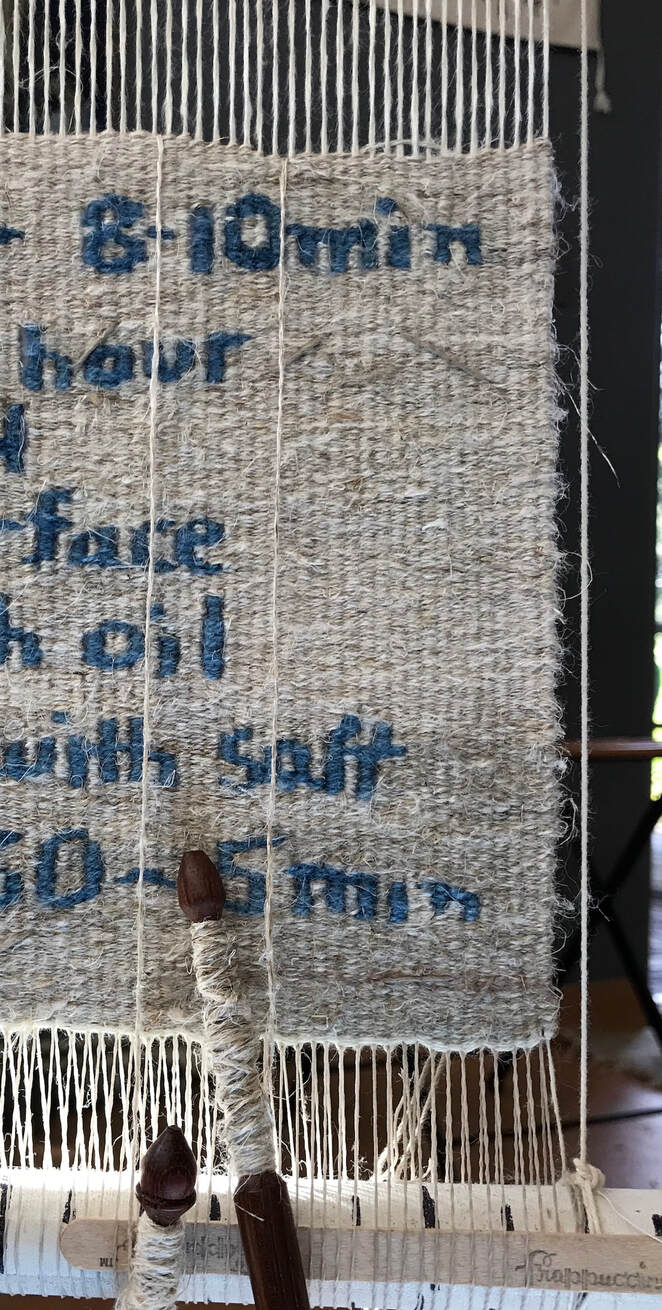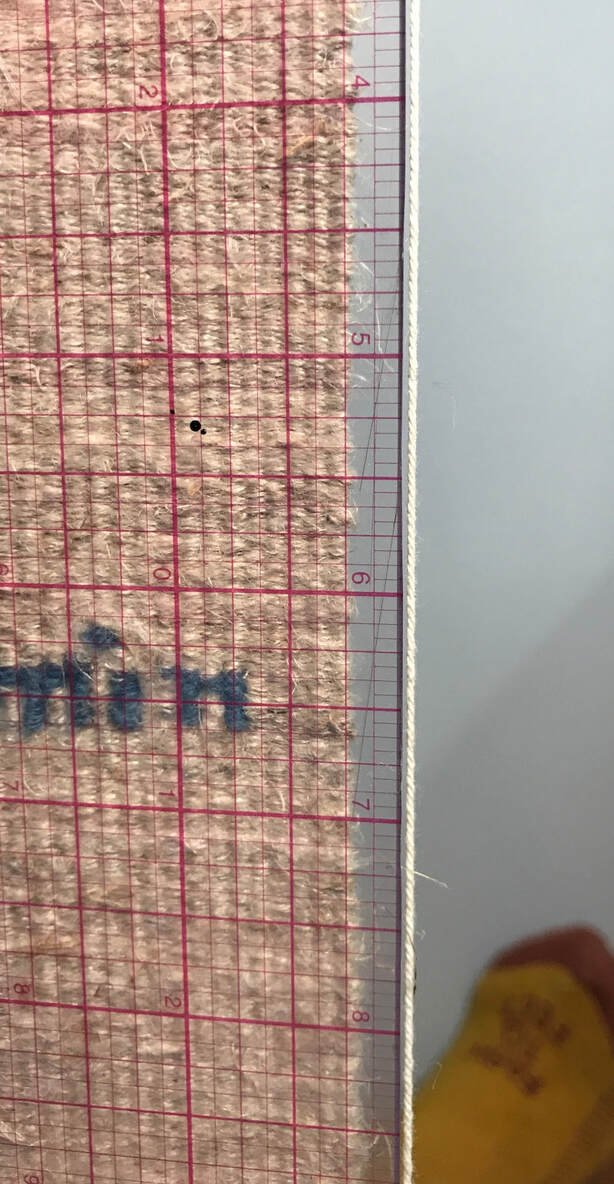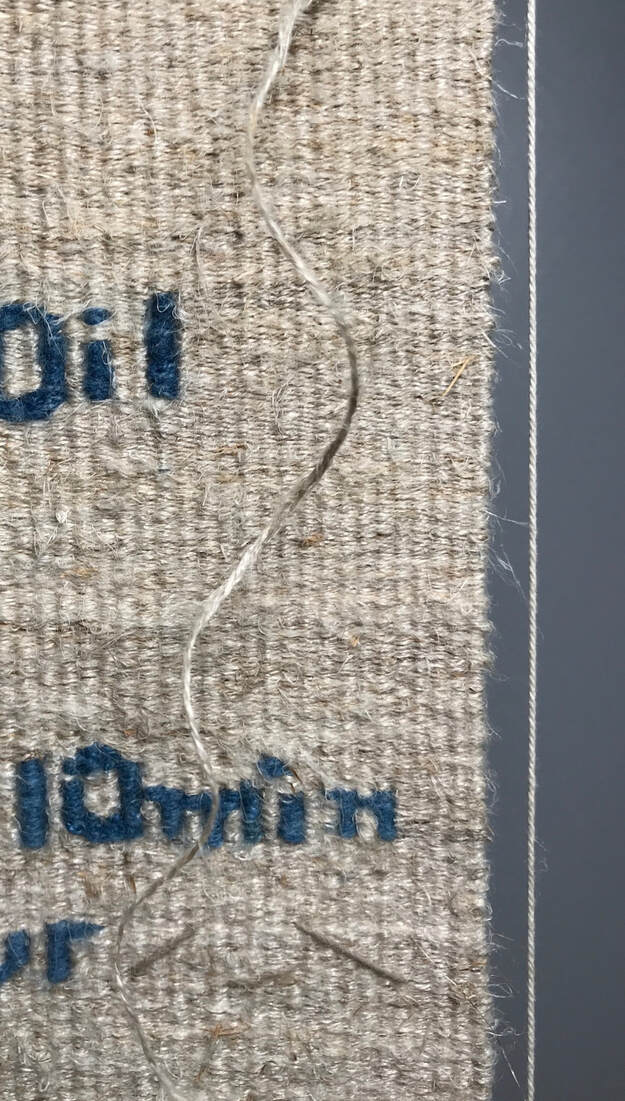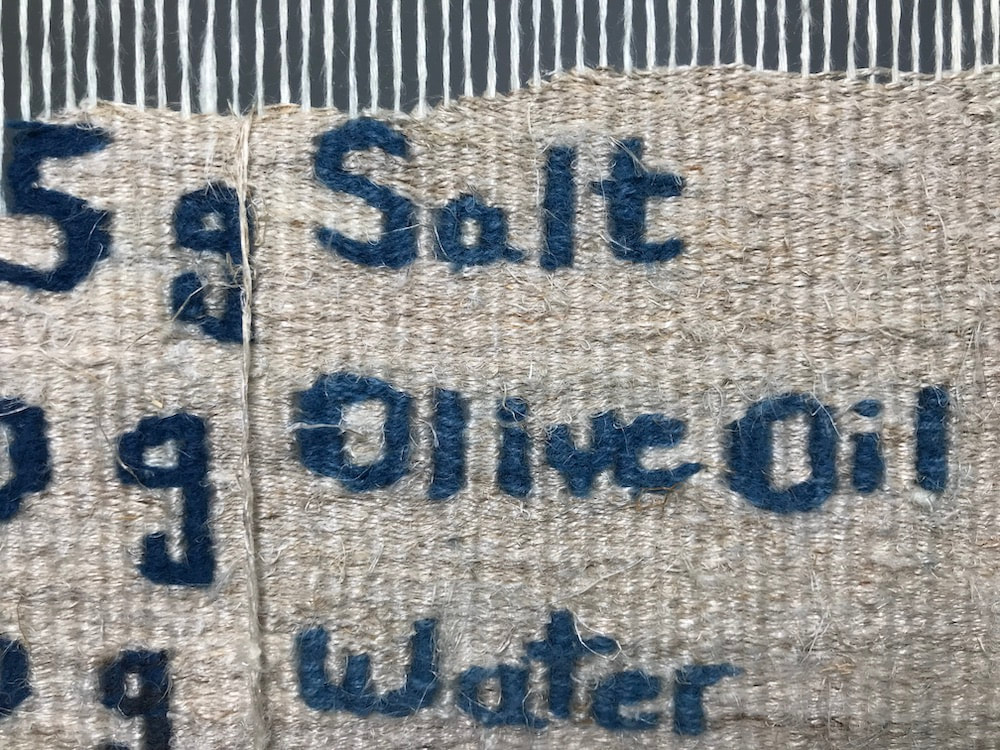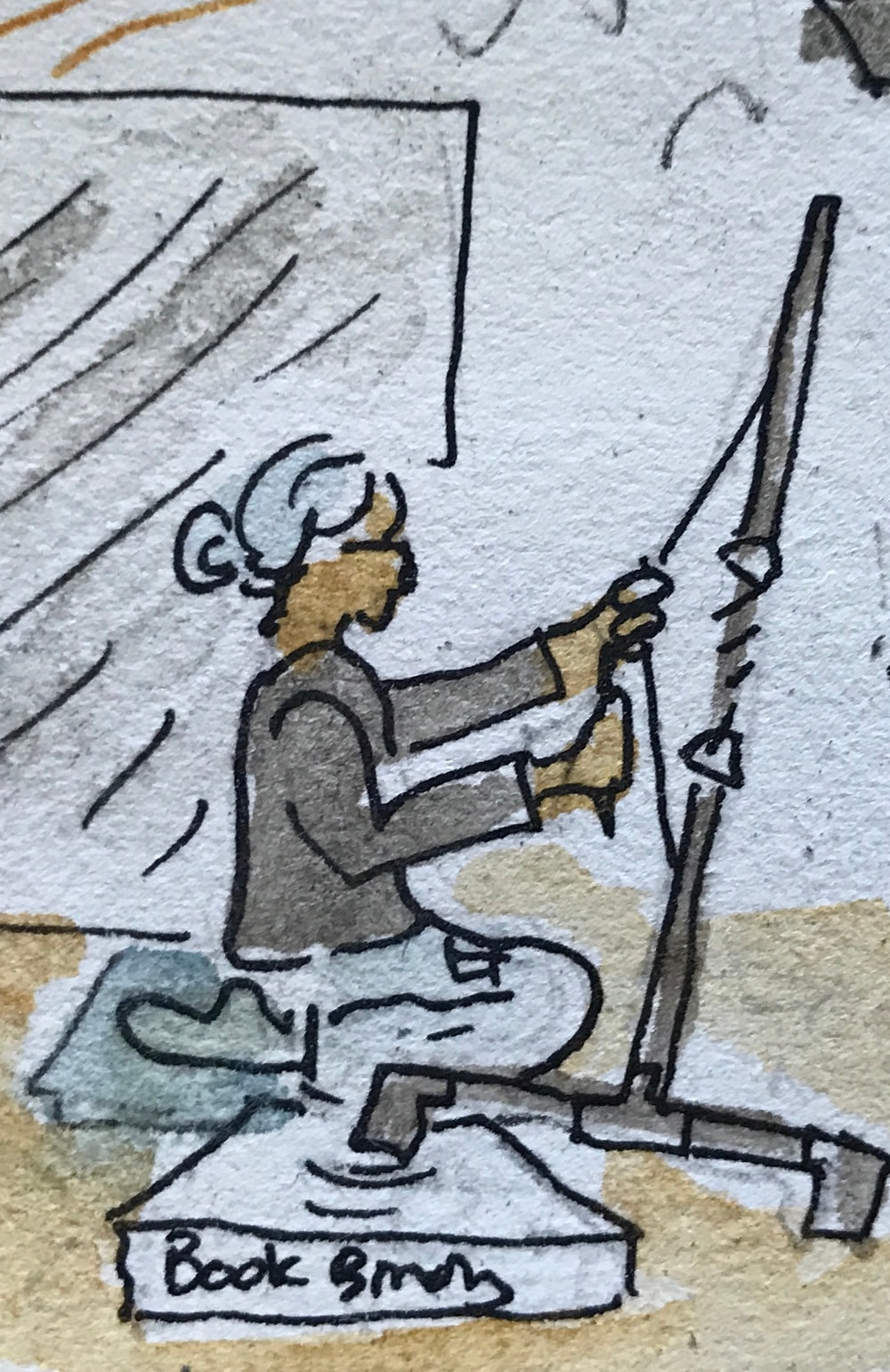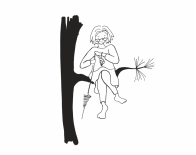it depends...
-- accuracy of my eye
--length of the warp
--current level of focus
--relative stretchiness of the weft
--attachment to selvedge straightness
--mood of the moment
(in other words: does Sarah give a shit today?)
Give a shit, that is.
Unless my selvedges are to be deliberately wonky
I like them to be as straight as I can get them
without making myself crazy.
(clearly a personal thing).
And like even spacing
and adjustable tension,
guide strings provide
a kind of invisible support
that makes this easier,
leaving me free
to sink into that amazing zone
that shape-building with yarn
invariable demands.
you're probably familiar with this state:
well trained hands working on autopilot
active brain engaged in minute decision making.
It is a particular kind of bliss
that is most accessible for me
when other parts of the business
do not require regular attention.
My zone, in other words
is not a place for multi-tasking.
a gal is writing a blog post
while scouring linen--
typing away--
focused on the words--
assuming
she is fully aware
of the simmering pot--
except clearly not
because the flax
is now boiling over.
EEEEK!
Ok. All better.
ANYWAY,
when I'm thinking thoughts like this:
"If I use three warps to weave the r,
it will probably touch the i --
unless I move the i one warp to the right,
but then it will them bump into the stem
of the n --unless that is a little taller..."
I also don't necessarily have the wherewithal
to notice that the side is drawing in.
Guide strings help me to notice
without really paying attention.
can you see how that the gap
between selvedge and string
begins to grow larger
right below the word "min?"
a matter of about 1/16 of an inch or so--
but it IS visible, and if not caught
could easily have kept going.
Check out the ruler below:
in the middle of the photo
the selvedge edge is directly on,
or slightly to the left
of the 1/4 inch vertical red line.
At the top and bottom
the selvedge edge
is slightly to the right of that line.
hard to see when looking at the entire tapestry,
yet if you watch the string
as you move down the photo below
you might see the selvedge
dip to the left
and then go back out to the right
as you scroll by.
(at least in my world),
was not enough to warrant unweaving,
but it was also not to be ignored,
and I was able to fix the problem
(slowly, over inches),
by making sure a little more weft
went into each bobbin pass.
Without the guide strings,
I might not have noticed
until the gap was wider,
and that would have bugged me
for a long time.
(it may have been Archie Brennan who brought them up)
I recall feeling a little shocked--
maybe even dismissive--
"I should be able to keep my selvedges straight
without that sort of thing."
And on a tiny tapestry,
I pretty much can
so I don't usually use them
on anything smaller than 5" tall.
The rest of the time though,
like practicing my concertina with a metronome,
guide strings provide the kind of invisible support
that make the ultimate work,
(tune or tapestry),
so much more satisfying.
warp -- Linen from Gist yarn and Fiber
sett: 9 epi
warping technique: Fringeless: four selvedge
galvanized pipe loom (1/2")
weft--hand spun flax (strick from Taproot Fibre)*
--hand spun wool (spindle)
--indigo
*Just noticed when setting up the flax link that Taproot Fibre
is selling linsey-woolsey blends for spinning.
Haven't tried them so have no idea what it'd be like,
but if you give them a try, do let me know.
Yet another approach to the combination of these fibers.
